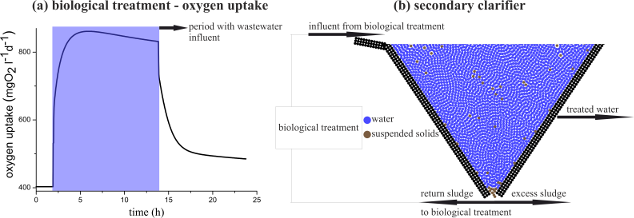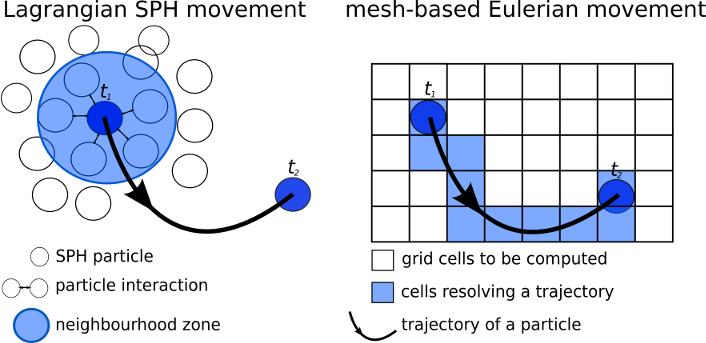Smoothed Particle Hydrodynamics in Urban Water Management
Project: SPHASE - Smoothed Particle Hydrodynamics Activated Sludge Engine
Funded by: FWF - The Austrian Science Fund

Project leader: Wolfgang RAUCH
Employees: Michael MEISTER, Daniel WINKLER, Massoud REZAVAND
Partner: IWA Working Group on Computational Fluid Dynamics (CFD) for Unit Processes
Project duration: 01/06/2014 - 31/05/2018
Keywords: Water purification, Aerated flows, Fluid mechanics, Smoothed particle hydrodynamics, Numeric computation, Biological kinetics
Scientific disciplines:
- 40% 207 Environmental Engineering, Applied Geosciences
- 20% 102 Computer science
- 20% 105 Geosciences
- 20% 201 Civil engineering
Brief description:

Research in the field of wastewater treatment is still based on small-scale modelling. Due to the improvement in computing power, computer-aided modelling has gained enormously in importance in the last two years. The active sludge model (ASM) developed by Henze et al., 1987 has been validated by a large number of experiments and is recognised as an established model for the description of biochemical processes. However, this concept assumes complete mixing of the reactors and thus neglects the influence of hydrodynamics. To remedy this unphysical simplification, some research groups are now using computational fluid dynamics (CFD) to describe the hydrodynamics of wastewater treatment in detail (Le Moullec et al., 2010; Zima et al., 2009; Wang et al., 2010). However, the underlying complex multiphase flows are difficult to solve with conventional grid-based CFD methods.

Within the SPHASE project, a numerical modelling routine for active sludge simulations based on the "Smoothed Particle Hydrodynamics" method (SPH) is being developed. Due to the complete Lagrangian formulation, SPH has significant advantages for use in wastewater treatment compared to conventional CFD methods. SPH directly allows the simulation of multiphase flows (Colagrossi et al., 2003), can describe the time evolution of process rates (Aristodemo et al., 2010) and transport processes (Tartakovsky et al., 2007). Further advantages can be found in the simpler description of reactor geometries, aeration systems, changes in operating conditions and more direct access to GPU implementations. Therefore, SPH is the ideal method to simulate the hydrodynamics of wastewater treatment. The concept of the SPHASE project foresees the development of a physically complete two-phase SPH model, where the time evolution of the oxygen concentration is described by an advective diffusion equation. Then calculation routines of important physical parameters for biochemical processes (e.g. oxygen transfer rate) are added. The main approach of the project is then the coupling between the locally resolved hydrodynamics and the ASM model, whereby local influences in the biochemical processes are taken into account. The interface to the coupling in SPHASE is established via the dissolved oxygen (SO) concentration. To summarise, SPHASE is a basic research project and aims to further develop the SPH method so that biophysical processes in environmental technology can be simulated with a special focus on wastewater treatment. In SPHASE, SPH will be applied to wastewater treatment for the first time and can therefore be established as a method in this scientific field. The proposed project has a highly innovative character and the importance ranges from the scientific fields of wastewater treatment and urban water management to fluid mechanics, hydraulics and computer-aided simulations.
This research project is funded by the Austrian Science Fund (FWF): Project [P26768-N28]
Further links:
Articles in scientific journals and conferences:
